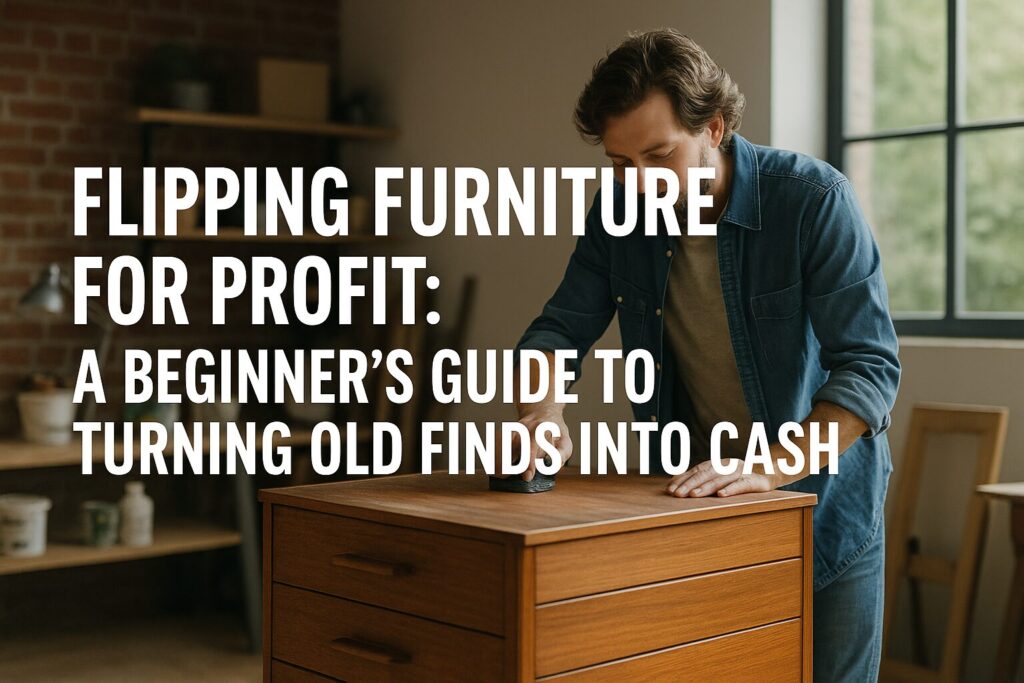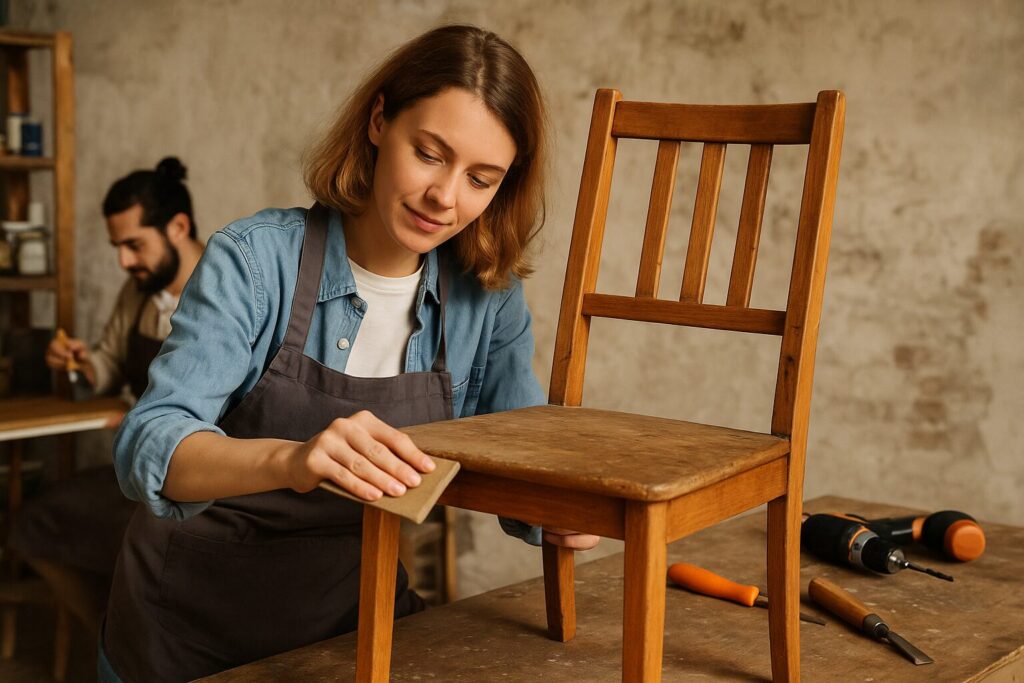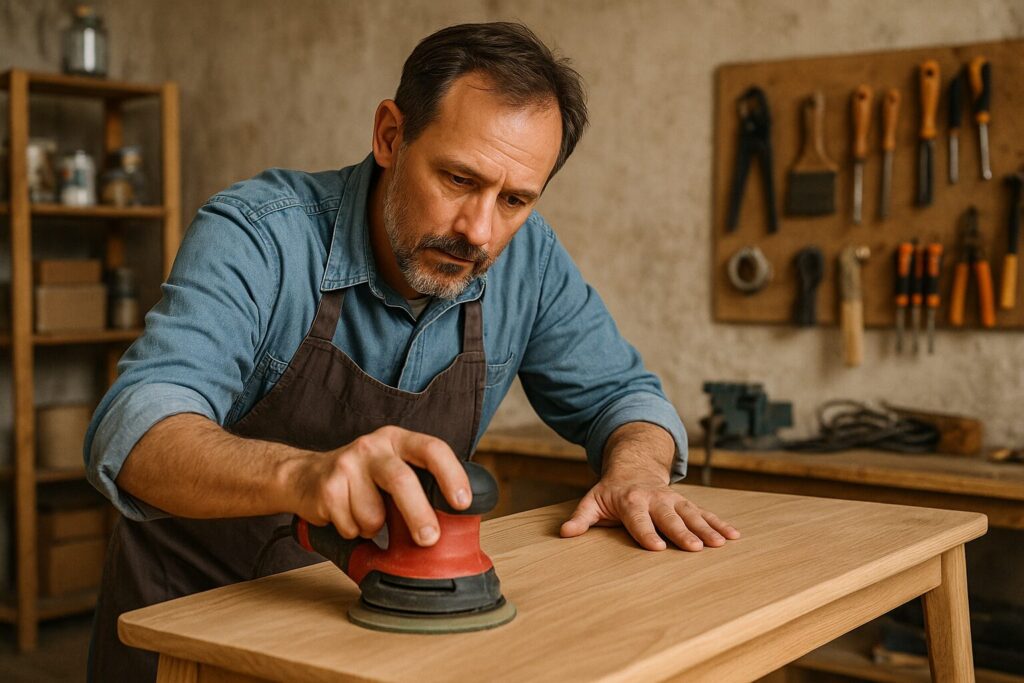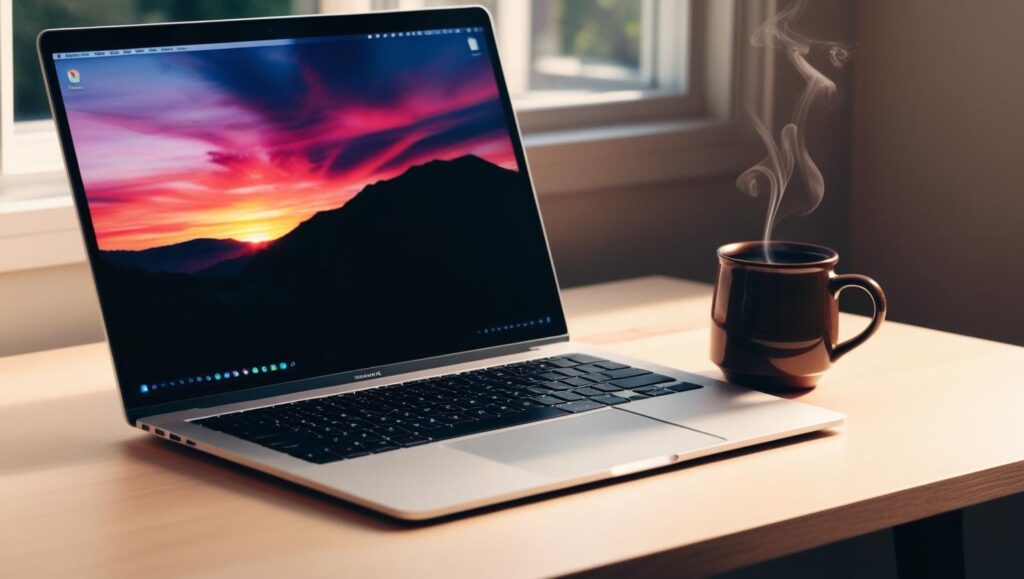Flipping Furniture for Profit: A Beginner’s Guide to Turning Old Finds into Cash
Discover how to flip furniture for profit with this beginner’s guide. Learn how to source, restore, price, and sell pieces—plus gear tips, pro hacks, and ways to scale your side hustle!
Introduction: From Trash to Treasure 💰🪑
Ever driven past a curbside dresser and thought, “That has potential”? If so, you’re not alone. Flipping furniture—taking old, worn, or discarded pieces and transforming them into stylish, sellable items—is one of the most satisfying and profitable side hustles you can start with minimal upfront investment.
Whether you’re passionate about DIY, eager to earn extra cash, or looking for a sustainable business model, flipping furniture for profit is a fantastic entry point into the world of entrepreneurship.
This beginner’s guide breaks down everything you need to know—from finding the right furniture to pricing, selling, and scaling your flipping business.

Why Flipping Furniture Works 🔥
The secondhand economy is booming, with sustainability-minded buyers and budget-conscious homeowners seeking one-of-a-kind pieces instead of overpriced mass-produced items.
Here’s why flipping furniture is a smart move:
- Low startup costs: You can begin with just a few tools and some elbow grease.
- Creative satisfaction: Transforming a tired piece into something beautiful is incredibly fulfilling.
- Flexible schedule: Work on projects in your free time—perfect for nights and weekends.
- High margins: Many flippers earn 200–500%+ ROI on pieces they find for free or cheap.
Pro Tip: Use local buy-nothing groups or Craigslist “Free” listings to source items at zero cost.
Step 1: Finding Furniture to Flip
Your profit begins at the pickup. The better your eye for potential, the higher your earnings. Look for solid wood pieces with good structure—even if they’re scratched or missing hardware.
Great places to find furniture:
- Thrift stores (Goodwill, Salvation Army)
- Facebook Marketplace
- Craigslist
- Yard sales & estate sales
- Curbside pickups
- Storage unit auctions
What to avoid:
- Particleboard or MDF furniture (unless it’s trendy or easy to refinish)
- Water damage or mold
- Missing major structural elements (legs, doors)
Pro Tip: Always test drawers, check for wobble, and inspect for pet damage or smells.
Step 2: Evaluating the Flip Potential
Not all old furniture is worth flipping. Ask yourself:
- Is it made from solid wood or a desirable mid-century material?
- Does it have good lines or bones for restyling?
- Is it trendy or can it be made modern with new paint or hardware?
- Can I complete this within my skill level and timeframe?
Types of furniture that sell well:
- Dressers and sideboards
- Coffee and end tables
- Vintage desks
- Bar carts
- Bookshelves
- Entryway benches
If it’s functional, stylish, and fits modern living spaces—it’s probably flip-worthy.

Step 3: Cleaning and Repairing 🧼🔧
Before you paint or sand anything, you’ll need to clean the piece thoroughly. Use degreasers (like Krud Kutter) and check for old wax or polish that could affect adhesion.
Common repairs include:
- Fixing drawer tracks or runners
- Re-gluing loose joints
- Replacing missing knobs or handles
- Tightening wobbly legs
You don’t need advanced carpentry skills to flip furniture—just patience and basic tools.
Step 4: Sanding, Priming, and Painting 🎨
The creative transformation begins here!
Tools to make it easier:
- Orbital sander (saves hours!)
- Tack cloths
- High-quality brushes and rollers
- Paint sprayer (optional for flawless finishes)
Paint finishes that sell:
- Chalk paint: Gives a matte, rustic look (great for farmhouse style)
- Satin or semi-gloss latex: Durable and modern
- Stain & poly: For natural wood lovers
Pro Tip: Neutral colors like white, gray, navy, and natural wood sell faster than bright or bold shades.
Step 5: Styling and Staging for Sale 📸
Buyers shop with their eyes, especially online. Make your listing stand out by:
- Cleaning up the background
- Using natural lighting near windows
- Adding a plant or decor for scale and aesthetic
Take at least 5 high-quality photos from multiple angles. Include close-ups of hardware and finishes.
Step 6: Writing a Listing That Sells
Your description should include:
- Dimensions (height, width, depth)
- Material (e.g., solid oak, pine veneer)
- Features (soft-close drawers, original hardware, custom paint)
- Pickup info (location, days/times)
- Price (and if it’s firm or negotiable)
Pro Tip: Use keywords like “boho,” “farmhouse,” “mid-century,” “refinished,” and “solid wood” to improve search visibility on Facebook Marketplace and OfferUp.
Step 7: Pricing for Profit 💵
You can find similar listings to guide your pricing, but remember: yours is unique and restored. Don’t undervalue your time or materials.
Use this simple formula:
Cost of piece + cost of materials + your time (hourly rate) + markup = Selling price
Example:
- Dresser cost: $20
- Supplies: $15
- Time: 6 hrs @ $20/hr = $120
- Total cost: $155
- Add markup (20%) = $186
- Round to: $195–$225
Where to Sell Your Flipped Furniture
The best platforms for beginners include:
| Platform | Best For | Why It Works |
|---|---|---|
| Facebook Marketplace | Local buyers, quick turnover | Free, easy to use, high traffic |
| OfferUp | Local pickup deals | Visual-friendly listings |
| Etsy (larger items) | Handmade/vintage niche | Great for stylized, high-end flips |
| Booth at Flea Market | Volume sellers | Adds exposure, passive foot traffic |
| Your Own Website | Brand-building + scaling | Ideal for growing into a full business |
Recommended Gear for Flipping Furniture 🧰
Start small, then expand as needed. Here’s what can boost your workflow:
✅ DEWALT 5-Inch Orbital Sander – Cuts sanding time in half, with a smooth finish.

✅ Kreg Pocket Hole Jig 520PRO – Easy furniture repairs and strengthening joints.
✅ Krud Kutter Cleaner/Degreaser – Essential for prepping grimy wood pieces.
✅ RYOBI Cordless Drill Kit – For quick repairs, assembling hardware, and upgrades.
✅ Furniture Dollies or Lifter Straps – Save your back when moving heavy pieces.
✅ Canon EOS M50 Mark II Camera – Take next-level listing photos or video walkthroughs.
Pro Tips to Maximize Your Profits 💡
✅ Batch your work: Sand multiple pieces at once to stay productive.
✅ Collect free furniture often: Even if you don’t flip it right away.
✅ Track your profits: Use spreadsheets or apps like QuickBooks Self-Employed.
✅ Offer delivery for a fee: It’s a great upsell and opens you to more buyers.
✅ Build a style niche: Mid-century modern, rustic farmhouse, boho, etc.
How to Scale Into a Full Business 📈
Once you’ve got the basics down, consider:
- Creating an Instagram or Pinterest profile to showcase your before-and-afters
- Partnering with local interior designers or Airbnb owners
- Taking custom orders or commissions
- Selling digital templates of your favorite flips (tutorials, color guides, etc.)
And yes—you can even turn your furniture flipping journey into content. Think YouTube tutorials, blogs, eBooks, or online courses.
Want to Build a Website Around Your Flipping Brand?
If you’re serious about turning this into a long-term income stream, build an online home for your hustle.
👉 Join me at Wealthy Affiliate — it’s the platform I used to learn blogging, SEO, affiliate marketing, and turn my creative ideas into real income online.
FAQs: Flipping Furniture for Beginners
Q: Do I need a truck or van to flip furniture?
A: Not at first! Many buyers will pick up items. But a larger vehicle does help if you want to scale.
Q: How much money can I make?
A: Beginners can earn $300–$1,000/month flipping part-time. With volume and strategy, some make $2K–$5K/month.
Q: What are the best-selling colors or styles?
A: Neutral colors (white, gray, black, natural wood), farmhouse, and mid-century modern styles sell fastest.
Q: How long does it take to flip a piece?
A: Simple flips can take 1–3 hours. Detailed restorations may take a full weekend.
Q: Do I need business insurance?
A: For hobby flippers, it’s not required. But as you grow, consider basic liability insurance if selling regularly.
Final Thoughts 🎯
Flipping furniture is more than just a trend—it’s a hands-on path to passive income and creative freedom. You can start with one piece, one weekend, and turn it into a thriving side business (or even full-time gig).
With the right tools, platforms, and strategies, your next treasure is waiting just around the corner.
So, what will be your first flip?
👉 And if you’re ready to build a brand around it—from flipping blog to flipping business—don’t forget to join me at Wealthy Affiliate to learn the exact steps I took to grow my income online.

Larry Mac
Hi there, and thanks for stopping by! My name is Larry, and I’m the voice behind 6fig.com. I search the Internet to try and find Money making opportunities to share.. Thanks for stopping by, feel free to subscribe and comment. Thank You!
You Got This, I Learned these skills and More at Wealthy Affiliate. Hey, if this 65-year-old Grandfather can make money online, you can too!


